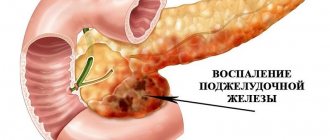Lymph node
Most parents know that lymph nodes are found in the neck, but are not aware that they can also be found behind the ears and in the back of the skull. There's no need to worry about a pea-sized elastic knot under your skin. They often occur in 2-month-old babies.
Healthy lymph nodes are unstable, they increase and decrease. If it is the same size as it was a month ago, there is no need to worry.
Bad lymph nodes continue to grow, noticeably increasing in size.
Causes of a lump behind the ear
If a small formation appears behind the child’s ear, this may indicate the development of various diseases. Many of them are not safe for the baby.
As a rule, what the lump looks like and what size it is (photos of lumps behind the ear of various etiologies are presented in this material below) depends on the factor that caused its manifestation.
So, next we will take a detailed look at the primary sources of the appearance of a lump on the head behind the ear in a child.
This is what cones of different origins look like
Lymphadenitis
If a lump appears near the ear, then the first thing you should think about is inflammation of the lymph nodes, which develops against the background of a weakening of the body’s protective functions.
It can occur at any seasonal time of the year, and it is not always possible to notice it immediately. In a baby, the lump behind the ear is usually not visible, since the lymph nodes are difficult to palpate.
Quite often, such inflammation is a consequence of infectious diseases.
In such a situation, the baby may complain of pain near the ear, but sometimes there are cases of painless inflammation.
Mumps
With this infectious pathology, the parotid salivary glands , which leads to the appearance of a lump under the ear on the neck.
Characteristic swelling appears on the earlobes, cheeks, and neck , while the sick baby will complain of pain when swallowing and may completely refuse to eat.
If you suspect the development of this pathology, you should immediately visit a doctor.
Reference. Mumps or “mumps” is a very dangerous disease, because if you do not seek medical help in a timely manner or do not follow the doctor’s recommendations, life-threatening and health-threatening complications often develop.
Inflammatory process in the ear
After treatment for otitis media, the lump will disappear on its own
If a formation appears on only one side, this is a sign of the development of inflammation of the middle ear or dermatitis.
After suffering from otitis media, the lymph nodes gradually increase in size and then decrease quite quickly.
In this case, there is no need for special treatment for the lump, but consulting a specialist will not hurt.
This is necessary in order to make sure that everything is in order, otherwise, this is a chance to begin timely treatment of the emerging pathology.
Atheroma and lipoma
Such pathologies are characterized by the appearance of a hard lump, which is usually located under the skin on the bone.
Atheroma is a benign tumor in the skin or hair root, filled with secretions. During normal functioning, the secretion of the sebaceous glands is removed through the ducts to the outside.
If the channel becomes clogged, the liquid accumulates and the size of the capsule increases. When pathogenic agents enter, purulent masses form. This phenomenon is treated with surgical intervention.
Lipoma (fat) is a benign tumor arising from adipose tissue. When pressed, you can feel it move under the skin. It does not pose a danger to the child, but if an increase in size occurs and discomfort is observed, it is removed.
Lipoma does not pose any danger to the child's health
Ear fistula
This is what a congenital parotid fistula looks like in an inflamed state
A fistula is a narrow canal that runs from the cartilage near the ear to the neck.
The pathology manifests itself in utero due to impaired fetal development.
It is visible immediately after birth, and increases slowly, without causing any discomfort.
If the fistula becomes inflamed, a large red lump forms near the ear.
Treatment in such a situation is carried out with antibiotics to relieve inflammation, after which the fistula is surgically removed.
Cyst
The development of a cyst can provoke the formation of a lump near the ear, which subsequently becomes inflamed and festers.
Often a cyst develops as a result of abnormal fetal development.
In this situation, if the neoplasm has become dense and immobile, this means the appearance of connective cells in it, that is, the properties of the secretion secreted by the sebaceous glands have changed.
If the baby has good protective functions, such a lump will open on its own after suppuration.
Congenital cyst
There are children with congenital cysts. Some people spend their entire lives with it without any problems. Typically found in front of the ear (preauricular congenital cyst), in the front of the neck (thyroglossal duct cyst), or on the sides of the neck (lateral cervical cyst). These areas may have dimples or tunnels to the cyst. Sometimes they need to be removed surgically. But more often you just need to watch them.
YOU MAY ALSO BE INTERESTED
- Inflammation of the lymph node behind the ear
- Otoplasty
Komarovsky ball behind the ear of a child
In most situations, the ball that appears behind the ear is an inflamed lymph node.
Lymph nodes are a kind of filters that act as the body’s natural defense against pathogens. When they increase in diameter and when painful sensations appear, there is a suspicion of some dysfunction in the lymphatic system or in a specific area. This is lymphadenitis. The diagnosis is made only by an experienced doctor after a preliminary diagnosis.
Why does the inflammatory process occur?
In normal condition, the lymph nodes should be soft, painless, and their diameter should not be more than three to four millimeters. With any change, developing lymphadenitis can be suspected. It can be localized or generalized.
Often a ball behind the ear is formed as a result of some pathology in a neighboring organ. The ear apparatus is located closest. The following diseases can cause an inflammatory process in the lymph node near the ear:
- Otitis externa.
- Otitis media.
- Internal otitis.
- Presence of a boil in the ears.
- Tubootitis.
Also, an enlarged and painful ball under the skin behind the ear can be caused by chronic diseases of the ENT organs: tonsillitis, pharyngitis, tonsillitis, as well as dental problems: caries, pulpitis.
The most dangerous disease that can provoke the formation of a ball in the ear or behind the ear is a malignant neoplasm that is located in the head or neck.
It is important to take into account all associated symptoms during a medical examination. There are certain signs that accompany an enlarged ball near the ear:
- Painful lumps form behind the ears, sometimes like a ball that rolls around.
- Not only the ear area hurts, the pain can radiate to the area of the mandibular apparatus, the temporal region, and the eyes.
- Sometimes signs such as febrile temperature, malaise, weakness, disturbances in appetite, and deterioration in sleep quality appear. Such clinical manifestations may indicate the presence of an infectious process in the body.
- A reddened area of epithelium begins to form above the inflamed ball.
The full clinical picture will depend on what kind of disease provoked the development of lymphadenitis.
If it is otitis, additional painful sensations appear, congestion of the hearing aid, the quality of sound perception deteriorates, and fluid of a different nature may be released from the ear canal.
In the presence of otomycosis, as a result of which balls are formed, additional itching, irritation or peeling appears in the ear canal.
With the development of otitis media, painful sensations of a shooting nature additionally appear, which radiate to the region of the mandibular joint, temporal region, eyes, the quality of sound perception significantly deteriorates, and body temperature rises.
After the release of purulent contents, additional symptoms appear such as the outflow of pus from the ear canal, easing of pain, but hearing is not restored.
If a patient suffers from chronic tonsillitis, he often complains not only that a ball has formed.
Additional symptoms of this disease also include the appearance of soreness, pain during meals, and the temperature is most often low-grade (febrile in children). Treatment involves an integrated approach. After eliminating the cause, the lymph node usually becomes normal in size.
If you have pharyngitis, the lymph node may also become inflamed. Additionally, pain, cough, tickling, and hyperthermia appear. Only a doctor can decide how to treat such diseases.
Self-treatment is not recommended, since infectious diseases can cause a lot of complications , including lymphadenitis (and not only local, but also generalized, for example, after a sore throat). Therefore, it is very important to completely cure the disease that caused the appearance of the enlarged ball.
Diagnostic measures
If suspicious symptoms or an increase in the size of the lymph nodes appear, you should visit a specialist as soon as possible. Treatment should be carried out only in accordance with the diagnosis. General diagnostic measures include:
- Initial examination by an otolaryngologist. The doctor also collects anamnestic data. The tactics of previous treatment of a cold or viral disease (if treatment was carried out) are determined. The inflamed node is palpated, its diameter, density, and how fused it is to the surrounding tissues are determined. After this, the nasopharyngeal cavity is examined using special instruments. The doctor also examines the ear canal using an otoscope and examines the quality of hearing (audiometry is usually used for this). The oropharynx is examined.
- Laboratory tests of blood fluid. A blood test shows the presence of elevated white blood cells, which confirm an infectious process in the body. Also, with the development of the infectious process, an increased erythrocyte sedimentation rate is detected.
- Ultrasound examination of lymph nodes. Such diagnostics makes it possible to assess the diameter, structure, shape of the lymph node, whether it is in contact with surrounding tissues, and whether there is an inflammatory process in the vessels.
- If the doctor suspects the presence of a malignant neoplasm, a biopsy is prescribed. In this case, the tissue of the formation is taken for histology.
- A bacteriological culture is taken, which can determine the type of pathogen and its susceptibility to antibacterial drugs.
- Additionally, spiral computed tomography is prescribed. It shows not only the characteristics of the lymph node, but also whether there is a purulent process in the lesion.
Therapeutic effect
Since the inflammatory process in the lymph nodes is not an independent disease, but only a consequence of other diseases, it is important to identify the cause. Only after this is adequate therapy prescribed.
Therapy involves the use of medications, a course of physiotherapeutic procedures, or surgery.
Medications are used to reduce the intensity of the inflammatory process so that the affected area does not hurt as much. Also, with the help of drug therapy, the condition of the body significantly improves, the cause that caused the appearance of the pathology is eliminated.
The doctor prescribes anti-inflammatory and antihistamine drugs, they help reduce pain and inflammation.
To neutralize the influence of infectious agents, broad-spectrum antibacterial drugs are used.
Physiotherapeutic procedures help move leukocytes to the affected area, dilate blood vessels, improve microcirculation of blood fluid, which increases immunity and the body independently fights pathogens. UHF therapy is not used in the presence of hyperthermia, if there is a suspicion of the presence of a malignant tumor process.
The use of surgical intervention is prescribed very rarely. Such treatment is advisable only if an abscess or adenophlegmon develops.
Surgical intervention involves incision of the node, sanitation, and treatment of the wound. To improve the drainage of pus, drainage is installed. With the right approach to treatment, you can completely get rid of the disease.
Source: LechiOtit.ru
Source: https://nikitazhilyakov.com/sharik-za-uhom-u-rebenka-komarovskij/
Abscess
If you find a lump behind your child's ear that bothers him (hurts), it may be caused by an abscess. They form when tissue becomes infected with bacteria and the body's immune system tries to fight it. An abscess usually produces pus and can cause painful swelling. You will probably notice that the lump behind your ear is warm. Doctors do not advise squeezing and piercing the abscess with a needle. If the abscess is larger than 1 cm and continues to grow, you should see a doctor. Some cases of abscesses require simple drainage to remove the pus. In more complex cases, they must be eliminated through surgery. Surgical procedures, due to the chance of infection, most likely involve antibiotics.
Summing up
- If you find a lump or lump-shaped growth behind your child’s ear, do not panic and think about the worst. It is important to consult a doctor and find out the cause of the tumor.
- Under no circumstances should you resort to traditional methods of treatment until you find out the cause of the lump.
Sources
- https://www.Kleo.ru/items/zdorovie/u-rebenka-shishka-za-uhom.shtml
- https://loramed.ru/bolezni/uho/u-rebenka-shishka-za-uhom.html
- https://www.no-onco.ru/opuxoli/dobrokachestvennye-opuxoli/opuxol-kotoraya-obrazovalas-za-uxom-u-rebenka.html
- https://OtekOff.ru/otek/deti/u-rebenka-vospalilsya-limfouzel-za-uhom
- https://VseProRebenka.ru/zdorove/simptomy/shishka-za-uhom-u-rebenka.html
- https://its-kids.ru/u-rebenka-shishka-za-uhom.html
- https://mama.guru/detskie-zabolevaniya-i-medikamenty/shishka-za-uhom-u-rebenka-prichiny-simptomy-lechenie.html
Mastoiditis
An ear infection can sometimes cause swelling behind a child's ear and neck. Swelling occurs
when bacteria from an ear infection travels to the mastoid bone, infecting it. The condition is called mastoiditis. This type of ear infection can cause swelling behind the ear, redness, ear pain, and headaches. Mastoiditis should be treated immediately with antibiotics. In some situations, a middle ear drainage procedure is necessary.
To help eliminate the source of infection and reduce swelling, use warmed olive oil to dissolve the wax (earwax) in the ear. All you need to do is add a few drops of warm olive oil and wait until the wax softens. Next, carefully remove the wax from your outer ear with a cotton swab, making sure it doesn't go too far into your ear canal.
If an ear infection is not treated early and your child's symptoms worsen, his or her condition should be evaluated by a doctor.
Symptoms of the neoplasm
Often, when a tumor is discovered, parents are concerned about the question of what kind of lump could be behind the child’s ear, and also how it can be eliminated.
It should be noted that a phenomenon of this nature can be up to 4.5 cm in size. The initial course is quite difficult to determine visually.
If an infection enters the area of atheroma, which is characterized by clear boundaries and the presence of a fatty element, the process of formation of purulent accumulations occurs, which is characterized by symptoms such as:
- swelling phenomena;
- itching and burning sensation in the ear area;
- sensations of pain at the time of external influence on the affected area;
- a sharp change in temperature towards an increase;
- the formation of liquid accumulation in the area of the fatty element.
When trying to identify a lump behind a child’s ear and trying to find out what it is, it is important to understand the advisability of receiving qualified help from a specialist.
Only a qualified otolaryngologist is able to not only record the fact that a child has a lump behind the ear, determine what it could be and what caused it, but also select the necessary set of treatment and preventive measures.
baby has a lump in his ear
Most diseases have quite obvious symptoms, when they appear we can figure out what is hurting us and which doctor to make an appointment with.
But there are also signs of diseases that still need to be dealt with. This is the case with the appearance of lumps on the auricle or in the ears themselves.
Let's consider what a lump on the ear or inside the ear is, its causes and treatment, depending on the source of the disease.
Reasons for appearance
Naturally, if you feel unwell or have tumors, the best decision would be to visit a therapist. After conducting an initial examination, he will refer you to the right specialist.
In this article we will list the main, common causes of lumps in the human ear.
The lump in the ear is a small lump, slightly soft to the touch, can roll under your fingers, and practically does not cause discomfort or pain.
A lump-like lump on the ear can be a consequence of a serious problem and pose a health threat. It is necessary to work with your doctor to find out the cause of the lump inside the ear.
Lymphadenitis. Inflammation of the lymph node can provoke the appearance of a lump behind or in front of the auricle. In this case, it does not itch or hurt, but if the lump is touched or pressed, you may feel a slight pain.
Otitis. Depending on the form of the disease, the characteristics of seals in the ears differ: place of occurrence, pain syndrome, nature of treatment. If a complication develops, the inflamed area hurts more.
Furunculosis. In this case, the lump is a boil. It can occur inside or outside the ear. The boil hurts regardless of whether you touch it or not.
Atheroma. Most often, atheroma is localized on the earlobe, but in rare cases it also forms on the ear.
Source
All parents monitor the health and well-being of their little child, this is especially pronounced in the first months of his life. The appearance of any deviations from the norm often causes fear, anxiety, and sometimes panic, and even more so such as a bump on a baby’s head. Why might they appear, and what should be done in this case?
Causes and types of bumps on the head of infants
Most often, bumps in infants are small, about the size of an average pea; such bumps are most likely lymph nodes.
They move freely under the skin, without causing pain or discomfort to the child. Their appearance is one of the variants of the norm. This can be explained by the peculiarity of the formation of the immunity of a small child.
They disappear on their own and do not require special treatment.
Another common cause of bumps in infants is birth trauma, that is, damage to the baby’s head during childbirth with gynecological instruments or other means. In such cases, small tumors or hematomas form in the newborn. As a rule, they disappear within the first days or weeks of life.
The third type of bumps in infants is cephalohematoma. Externally, it is a tumor filled with fluid and is usually small in size. If the skin above it does not change color when palpated, this can be considered normal. Cephalohematomas disappear completely and without consequences after two weeks.
There are also a number of symptoms, if they appear, you should immediately consult a doctor for advice. These include:
Particularly dangerous symptoms are considered to be disturbances in the baby's sleep, lack of appetite, severe neurasthenic disorders, and anxiety. You should definitely pay attention to such signs and immediately contact your pediatrician or consult a pediatrician when they appear.
Source
Help, please tell me what to do and who to contact. Four days ago, my three-year-old daughter found a regular-shaped round lump on her ear, about a little less than a centimeter in diameter.
The color of the lump is almost the same as the skin, maybe a little lighter. When pressed, it looks like an earlobe, not hard inside. When I asked my daughter if it hurt, she answered that it didn’t.
My daughter constantly runs, falls, hits herself, they thought she hit herself somewhere, but the bump doesn’t go away and doesn’t get smaller. So far I have been observing it for four days, always the same in color and consistency.
Do you already need to run to the doctors? Sound the alarm? And which specialist is better? I'm attaching a photo, sorry it's dark, the baby was already asleep. - yes, still. Just recently we took tests at the clinic, blood and urine, the doctor said the tests were good.
is provided for informational purposes only. Based on the results of the consultation received, please consult a doctor, including to identify possible contraindications.
He graduated from the St. Petersburg Pediatric Medical Academy and has been working as a surgeon since 1999. Author of over 40 scientific publications. Speaker and participant in symposia and conferences on pediatric and general surgery. He is the author of the domestic anti-adhesion agent Mesogel.
From 2005-2007, he headed the surgical department at a multidisciplinary hospital in St. Petersburg. Currently oversees the One Day Surgery project for children at the American Medical Clinic.
Good afternoon. My name is Anastasia. A couple of days ago I noticed that a small pimple appeared behind my ear, it hurt a little. I didn’t touch it, later I decided to smear it with iodine...
Hello, I have already written to you about a similar lump on my ear. My daughter has had a lump on the shell of her ear where the tragus has been since birth (there is a lump on the cartilage below ha). At first she just...
Good afternoon. They pierced the child’s ears and treated them with peroxide.
Source
The child has a lump behind the ear
Some diseases are difficult to diagnose because their symptoms may be signs of not one, but several diseases at once.
For example, a normal cough in a child may simultaneously indicate a viral infection, pneumonia, tuberculosis and even helminthic infestation.
But often parents are faced with a not so common symptom and wonder what it could mean.
Today we will talk about the appearance of a lump behind the ear in a child: what it is, what disease it signals, why a lump may appear behind the ear and what treatment is required.
Enlarged lymph nodes
- the most common reason why a lump appears behind a child’s ear. In this case, it is a small compaction, soft to the touch. Most often, lymph nodes located in pairs enlarge simultaneously.
In addition, they are inactive and do not move with the skin. But keep in mind that in a baby the lymph nodes are difficult to palpate, and the lump behind the ear will not be very noticeable. Lymph nodes may enlarge after infectious diseases (including diphtheria and toxoplasmosis).
If a child has a lump only behind one ear, then this may be due to a local infection (for example, inflammation of the middle ear, dermatitis, etc.). After an illness, the lymph nodes gradually increase in size, but soon return to their previous size.
This does not require treatment, especially if the disease is already behind you, but you still need to see a doctor.
For mumps
(popularly known as mumps, or behind the ears), the parotid salivary glands can become swollen, causing lump-like lumps to appear. The tumor is also transmitted to the cheeks and earlobes, and other symptoms include fever, pain when chewing and swallowing food,
Source
Hello, please help! Today I discovered a hard lump in the ear of a child (2 months old), looked through all the photos and videos from birth - this tumor did not exist! What does it look like? We’ll see a doctor only after the holidays, but my soul is no longer in the right place, I really ask for advice, I’m attaching a photo.
9 answers
We went to the surgeon, he didn’t even bother to look much, he said it looked like cartilage and sent it to Laura, and there the young guy poked and shined a flashlight for about 10 minutes and also said that it looked like cartilage. My question is: can this happen? But there is no such ball on the second ear.
There may be an abnormal arrangement of the cartilage. Without seeing I can't say anything. If 2 doctors said it was cartilage, then it is so.
I have a question for Yulia! We now have the same problem and doctors shrug their shoulders and do not give an exact answer. Tell me what happened next: did this lump go away or not? Have you found out the reason for its appearance?
Nika, good afternoon! Can you write to me if you found out what it was? My 3-month-old child has the same problem, although we haven’t gone to the doctors yet.
Hello, the problem is similar to previous patients. We are almost two months old and we have cartilage in our right ear, we went to a surgeon and an ENT specialist and they said that it is cartilage and we don’t need to do anything, just observe.
Question: where could it come from, and what does it mean to observe? What would not grow further or something else? Is it possible for a child to lie on this ear? Is it possible to process it with something? Do I still need to see a specialist? Very worried.
This is a feature of the structure of your ear. Observation means going to an appointment once every 6-12 months. You can lead a normal life. You don't need to do anything.
What should I do if I have a similar but different question?
green coating on a baby The tongue is a specific indicator of the functioning of internal organs. For this reason, doctors always initially examine the oral cavity during an appointment. They check if there is a coating on the baby's tongue, since it is not
If you did not find the information you need among the answers to this question
Source
A lump or ball behind the ear on a bone in a child can have various causes. This happens both as a consequence of infectious diseases and changes in the tissues around the head. An otolaryngologist will provide more accurate information after examining the patient.
Mumps (mumps)
Mumps is the most common childhood disease, one of the signals of which is a tubercle near the hearing organ. This is an infectious disease that is spread by airborne droplets.
Droplets of mucus can not only infect babies through direct contact, but also remain on clothes, toys, and pieces of furniture with a high probability of subsequent infection. Therefore, it is important to avoid contact with children sick with mumps who have not yet had this disease.
After recovery, immunity to this disease is developed for the rest of your life.
Mumps is characterized by inflammation and enlargement of the salivary glands, which is initially perceived as a ball near the ear. Over time, the tumor spreads to the earlobes and cheeks, hence the name “mumps.” Other signs of infection:
When mumps is diagnosed, the patient is isolated for 9 days, follows a special diet and bed rest. Since there is no specific therapy for mumps, the main thing is to prevent complications, which can be inflammation of the genital organs, infertility or pancreatitis.
After vaccination against mumps, a lump (lump) often appears behind the child's ear. This is normal, so there is no need to worry in this case.
Inflammation of the lymph nodes (lymphadenitis)
take the baby's temperature When the body initiates a protective reaction to any infection, the temperature rises. They say that the immune system works well if the illness is accompanied by fever.
However, the higher its indicators, the more
A lump behind the ear in a baby or under the ear in an older child may indicate inflammation of the lymph nodes, which are part of the body's immune system.
Lymph nodes protect the ENT organs from pathogens. Seal
Source
Diagnostics
As a rule, this formation is dense, but at the same time painless, it does not cause discomfort to a person. When pressed, this seal is quite mobile, as if it moves under the skin.
It can grow, eventually reaching the size of a quail egg. It is also important to make sure that this formation is not a tumor. Therefore, it is best to immediately contact a medical facility.
Types of cones
Lump as a result of inflammation of the lymph nodes
. This formation appears after a person has suffered some kind of infectious disease. This could be toxoplasmosis, diphtheria, or other infections.
This phenomenon can also be a complication of otitis media. As a rule, bumps appear behind both ears at the same time, since the lymph nodes are located in pairs.
This phenomenon does not require special treatment and over time such bumps will resolve on their own.
Wen or atheroma
. This tumor can appear anywhere, including behind the ear. Occurs due to blockage of the sebaceous duct. This lump is mobile and painless. Such a neoplasm rarely develops into a malignant tumor, but it is necessary to keep it under control.
Mumps (mumps)
.
This infectious disease can also cause a lump to appear on the bone behind the ear. The cause of the appearance in this case is inflammation of the salivary glands, which are affected by this infection.
Moreover, the swelling can spread to the neck and also to the cheeks (hence the name of the disease). In addition to lumps behind the ears, in the case of mumps, there is also an increase in temperature, pain when swallowing, and general malaise.
Symptoms
This formation appears suddenly. Its size will depend on the cause of its occurrence. Mainly education
Source
Source: https://bornechal.ru/post/1482-u_grudnichka_v_uhe_shishka










